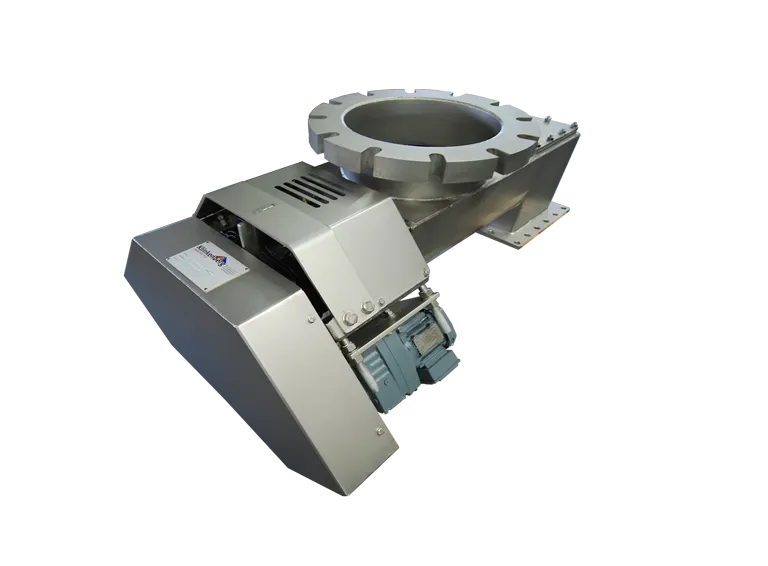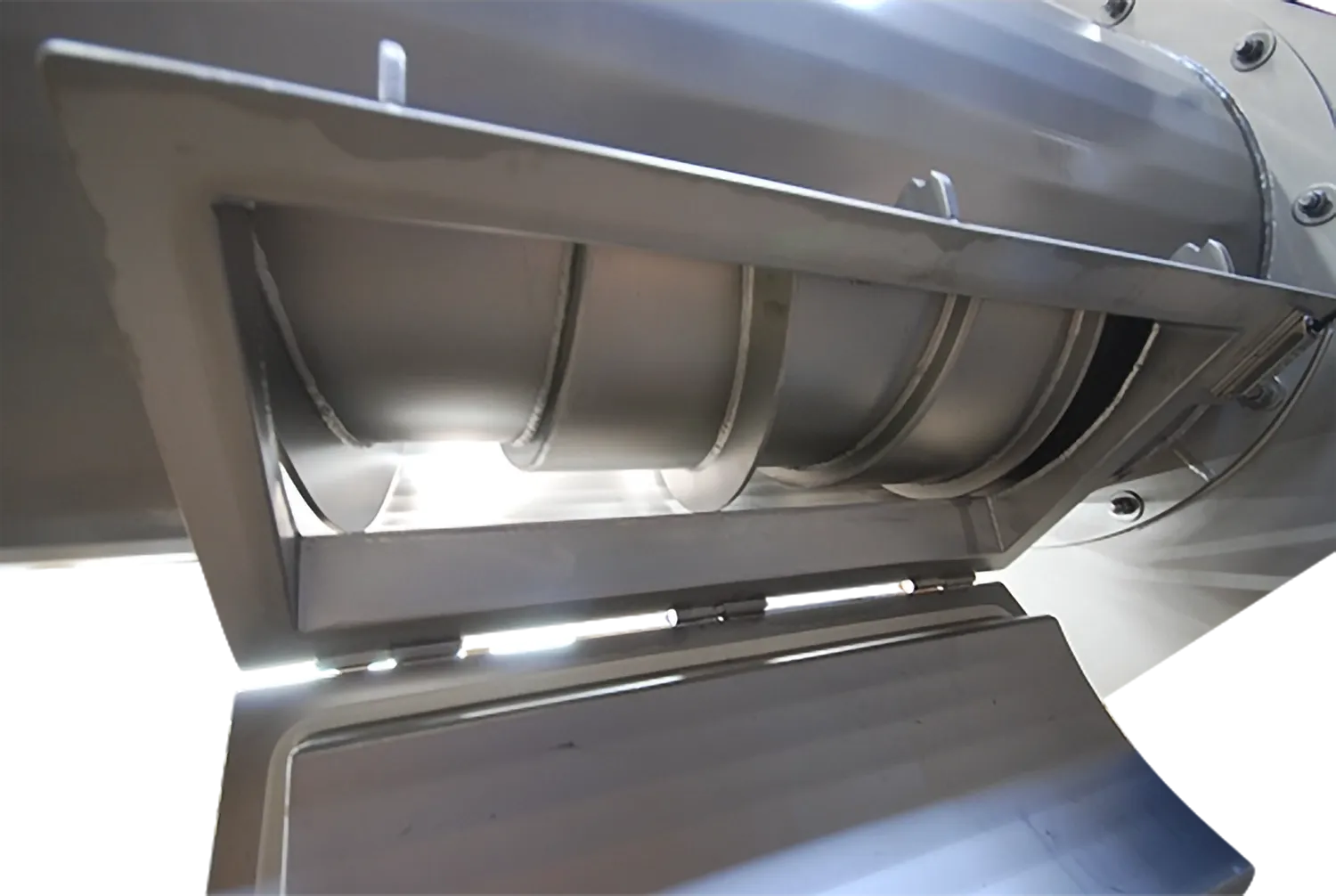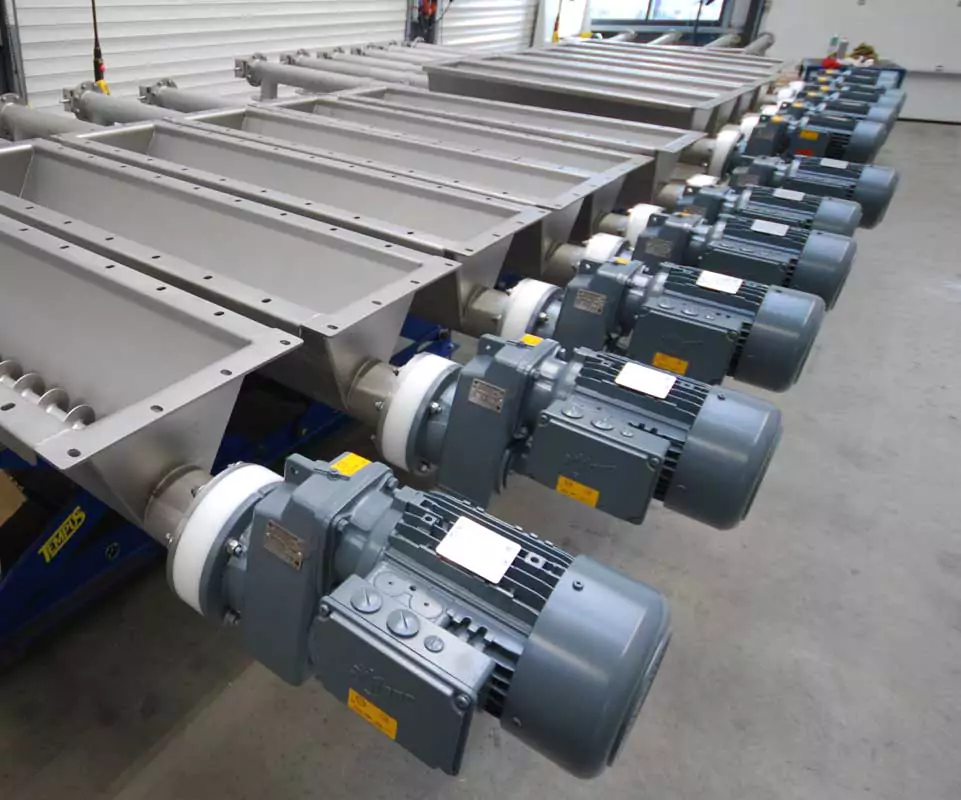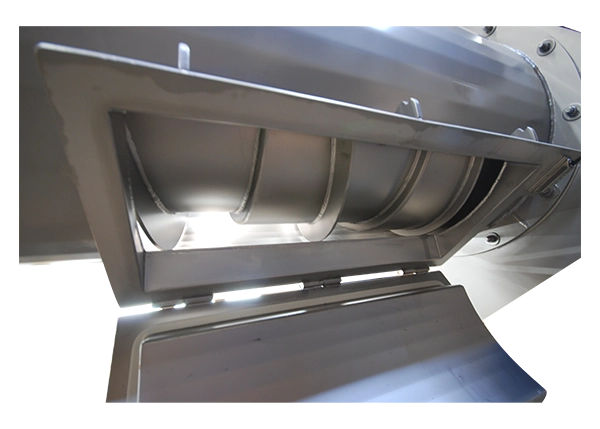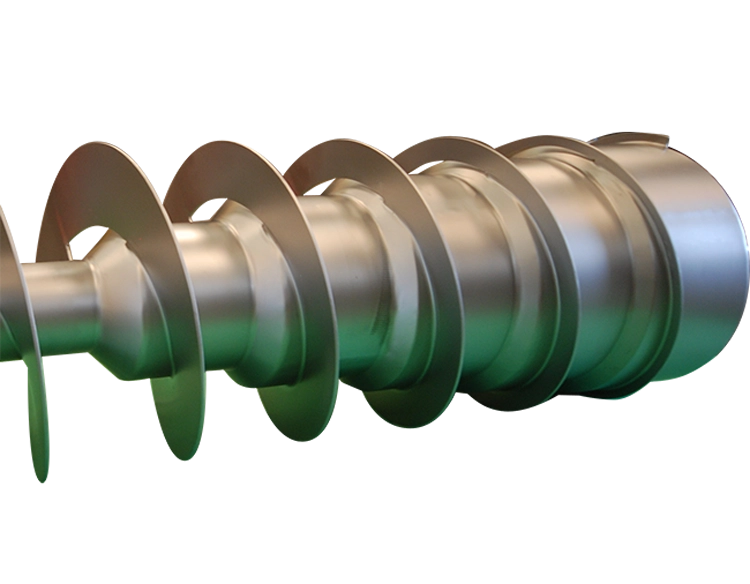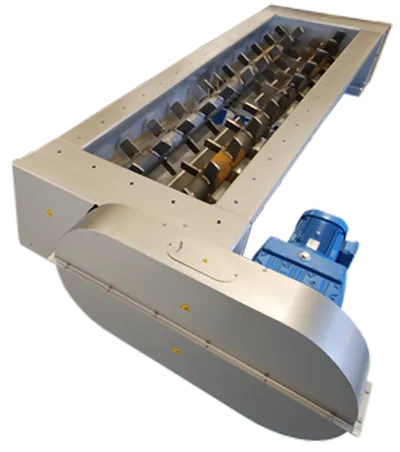Design and functionality of discharge screws for mass flow dosing
Design principles for consistent mass flow with FIFO discharge screws
When designing a discharge screw, also known as an extraction screw for mass flow dosing, an even capacity distribution across the entire surface of the hopper or silo outlet is crucial. This contributes to a consistent mass flow and prevents operational issues such as bridging, channeling, or irregular product discharge.
Uniform product extraction is especially important in processes that require continuous withdrawal of bulk materials, such as in vertical heat exchangers or cooling towers. In such applications, it is essential that the product is discharged according to the First In, First Out (FIFO) principle, ensuring uniform thermal or chemical processing.
By applying one or a combination of these design adjustments, a stable and controlled product discharge is achieved — essential for processes where consistent mass flow and FIFO material extraction are desired.
To achieve this uniform extraction, several factors must be considered in the design of the discharge screw:
- Variable pitch:
By reducing the pitch of the screw flights toward the outlet, the intake rate of the product is gradually decreased. This prevents excessive material intake at the beginning of the screw and supports balanced flow. - Adjustment to bulk material characteristics:
The choice of screw parameters must be aligned with the properties of the bulk material, such as cohesion, flow behavior, and bulk density. - Conical shaft core design:
An increasing core diameter (or shaft envelope) along the length of the screw results in a decreasing fill ratio, enabling more uniform discharge of the material. This prevents buildup and minimizes the risk of bridging in the silo. - Conically designed trough:
By gradually increasing the trough width or height toward the outlet, product is evenly discharged per screw rotation along the entire inlet length — extracted from the silo/hopper as FIFO. This ensures uniform material movement and avoids undesired stagnation zones. - Adaptation to the silo outlet:
The geometry and dimensions of the outlet opening play a major role in preventing stagnation zones and ensuring consistent material flow.

